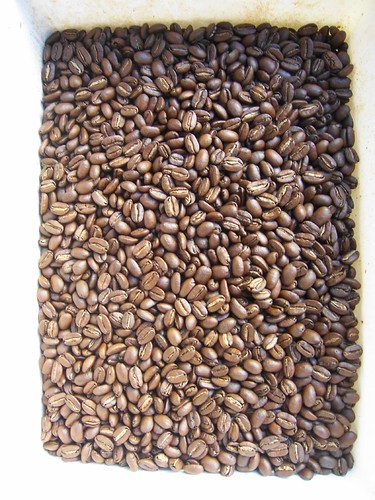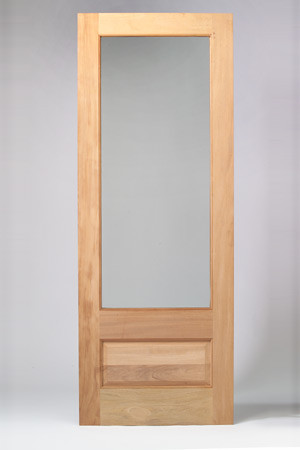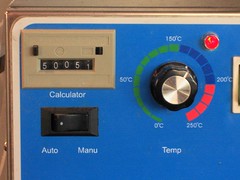John Says...I've been working with some new roast profiles this past week. There are three camps on this issue:
The first is that the progression of roast via the roast curve makes a difference with respect to each bean. The second is that there is an optimum roast curve based on the chemical processes happening within the bean, and it is the knowledge of when to drop your beans that matters. The third camp would say that there is a generally acceptable "Point A" and a generally acceptable "Point B", and if you go from A to B quickly, and then it's a matter of leveling off and progressing the roast from there... it really didn't matter HOW you got from A to B, as long as you didn't stall the roast... in the cup, wouldn't matter. And you can be sure there are countless variations of all three.
The simple question is: Does profiling matter?
I would place myself somewhere amongst the first and second camps. I think that as a practical solution, there may be an optimum profile for various types of beans, and while there may be a perfect profile for every bean, I have neither the time nor the beans to waste to find out. I think that there is a profile for most SHB (strictly hard beans), and as Willem Boot proposed, a profile for the larger beans, such as the Margogype, and/or the more delicate beans such as the Gesha. Because of their size and density, I believe there is a profile that is best suited for peaberry, although I haven't found one I am 100% satisfied with. And it may be there needs to be a more
gentle progression the latter stages of the roast because any endothermic heat built up has a greater influence inside such a small bean. ... I'm still working on that.
I've spent a fair amount of time profiling in previous years, and my roaster has the ability to take profiling to an insane level, and from my hands-on experience, I will say that the degree to which profiling matters is directly correlated to the complexity, or quality, of the beans. If I get a generic Brazil Cerrado and tweak the profiles, there isn't much noticeable change in the cup. However, if I roast a Brazil Cachoeira Estate, a Brazil Daterra Santa Columba, or especially the Brazil Fazenda Esperanca, the more flavor nuances there are, the more critical the roast progression is into highlighting the "middle" complexities of these coffees.
Internally, there is a slight difference in the nature of the bean, because I can see it when I grind. For example, do you increase by 30 degrees a minute, 40 degrees a minute, or something greater? Is it a straight progression to first crack? Is it a graduated progression? Or does it progress faster as time goes on? I am finding that a gradual progression after reaching first crack seems to produces a little more
sweetness and distinctive flavors, while another curve may produce an amalgamation of those flavors, but they may not be as precise. Sort of the difference between what many find in espresso from a Robur vs. a Super Jolly.
Suffice to say, profiling is interesting, and I think that we are just scratching the surface. There are some theories that are complete b.s., and others that I've found out to be true, but what I am certain of is that the more the bean has to offer, the more profiling matters.
At least that's what I think.



